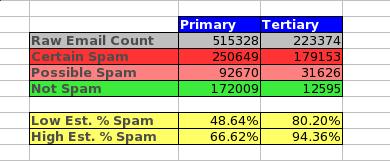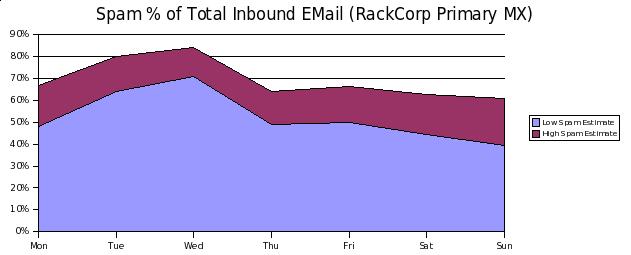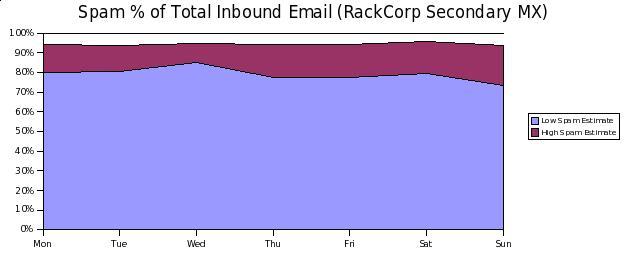Spam Statistics #2
Some of you who had read our old NSCorp blog would recall that we love periodically looking at spam statistics in order to best tweak our spam systems.
A question was proposed on a hosting forum board a few days ago of just why do spammers target secondary/tertiary mail servers, and we ofcourse suggested it was due to two things:
1) The secondary mail server is more likely to accept the email due to various configurations out there of relaying whole domains rather than individual accounts. Thereby increasing the chance of at least getting a non-delivery bounce being sent to somebody (a bounce is better than no bounce).
2) When the spam software on the primary gets the email, anti spam software is less likely to look at past hops rather than the immediate one, and due to the trust relationship with the secondary/tertiary mail servers, it is less likely to be detected as spam.
That’s all good, reasonable logic behind why spammers would do such things. But do they? So we decided to analyse our mail servers and check what volume of spam really do come in via the primary vs. secondary vs. tertiary mail servers over the month of April:
So there we have some raw numbers…..suggesting that of the email the primary server receives, between 48% and 66% of the email is spam, while the figures are between 80% and 94% for the secondary and tertiary mail servers. These figures aren’t actually too much of a surprise as we ran up similar numbers internally late last year.
While we’ve got the numbers open, let’s do a day-by-day analysis for April too:
So it looks like Tuesday/Wedneday are the biggest days for receiving spam by around 20%, and the weekends the lowest.
There are some limitations on the above stats that could affect the quality of the stats:
1) Some RackCorp customers have greylisting turned on on their accounts/aliases. The above stats are only based upon what has happend AFTER greylisting – so it’s probable that the spam % stats are actually higher.
2) The per-day stats are based upon total emails – more real emails are sent on certain days, which would impact upon the stats.
3) For heavily spammed domains, RackCorp employs a tertiary MX record that accepts connections but never accepts email. This means that some spamming software would send, not get the error, and would never try again. Once again this means it is probable that the spam % stats are higher.
So that wraps up this stats session. There’s nothing much we could use there to improve services, except perhaps increasing the score applied to all emails received via secondary/tertiary MX servers. For now….we’re fairly happy with our anti-spam services. If things get worse, we might have to fall back to this information.
– RackCorp


